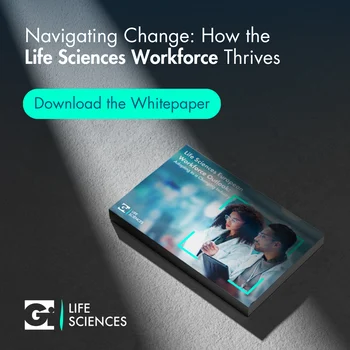Our research team at Gi Life Sciences recently published an in-depth report called the Life Sciences European Workforce Outlook which includes some interesting information on how businesses active in this sector are working to acquire needed talent.
In this text I wanted to highlight some hiring trends that were raised in our research carried out in partnership with the labour market analytics company Lightcast. Below are a few points highlighting what employers have described as key challenges when it comes to mapping new talent and making decisions on talent hires in the Life Sciences industry:
Skills shortages and workforce gaps pose a problem
At present, demand for specialised talent is outpacing supply. There is a notable skills crunch in areas like AI, digital health and elder care specialties. Meanwhile, there are number of new career opportunities that the market is not yet ready (skilled) for. Our analysis reports rapid growth in emerging roles such as neurodiagnostic technicians (+550%) and cancer treatment specialists (up 49% and 150% depending on type). Meanwhile, traditional roles like patient transporters (down 52.65%) are declining due to automation. Interestingly, demand for operational roles has risen sharply; especially in manufacturing and supply management related to Life Sciences technologies and services. New regulatory changes and shifts by businesses to nearshoring operations have had a significant impact on the search for new talent.
Demographic changes and regional shifts are important
When speaking of top regions for hires in Life Sciences roles, our analysis show that where a candidate works matters. Traditional Western European hubs (Germany, Switzerland, France) remain central to hiring in the Life Sciences, but Eastern European countries (Bulgaria, Hungary, Latvia) are emerging as dynamic talent sources. At the same time, Ireland has become a key hub due to its balance of strengths across biopharma, MedTech and research. Then, alongside the issue of Where to find work? in the Life Sciences sector, there’s also the question of Who is getting hired? It’s important to note that women represent a significant portion of the workforce (60%) but remain underrepresented in leadership and technical roles. Plus, the sector also struggles to address issues with an ageing workforce. Many older workers tend to be concentrated in technical and operational roles and are not yet fully skilling for future-facing tasks and new AI-driven work approaches.
Boosting talent matches is a two-way street
The analysis also confirms some advice our teams have been giving to candidates and employers for a while now: progress happens when both sides actively work to connect and evolve. Efforts need to be made on both ends to find talent matches. Our teams recommend that candidates and employers alike focus on upskilling and reskilling, while employers should leverage skills-based hiring over traditional credentials. It is critical to embrace flexible and diverse workforce models, including mentorship programmes and targeted leadership development. Parallel to those efforts, a smart organisation will seek to tap into underutilised talent pools, such as older workers and women in technical fields, to bridge workforce gaps. In-depth labour market research (specifically internal efforts) and atypical talent sourcing will have increasing value in our era of growing skills gaps and mismatches. We cannot stress enough the need for strategic workforce planning and investment in talent development to navigate industry challenges and sustain growth. That is how hiring efforts in the Life Sciences industry will improve in our continually disruptive world of work. We cannot stress enough the need for strategic workforce planning and talent investment. In the end, it is strong, future-focused connections that will sustain hiring success and fuel innovation in an ever-evolving Life Sciences landscape.
Want to dive deeper into these insights? Explore our latest webinar to learn more.
If you're looking for support to navigate challenges such as these, we can help. Enter your details into our form and our team of experts will connect to explore how we can support your goals.
Because great connections do more than build teams.
They ignite innovation and empower individuals.
Great Connections Bring Progress.

.png)

